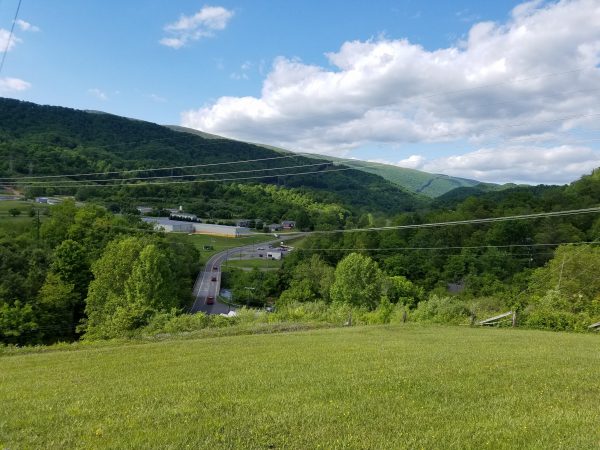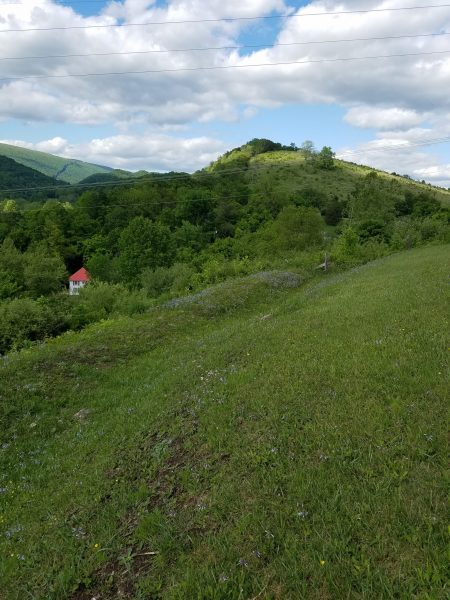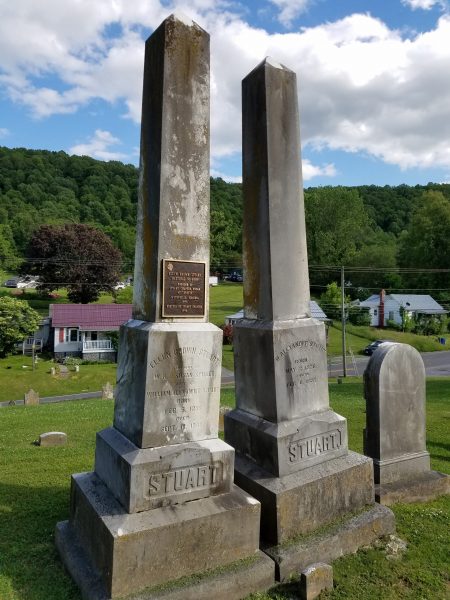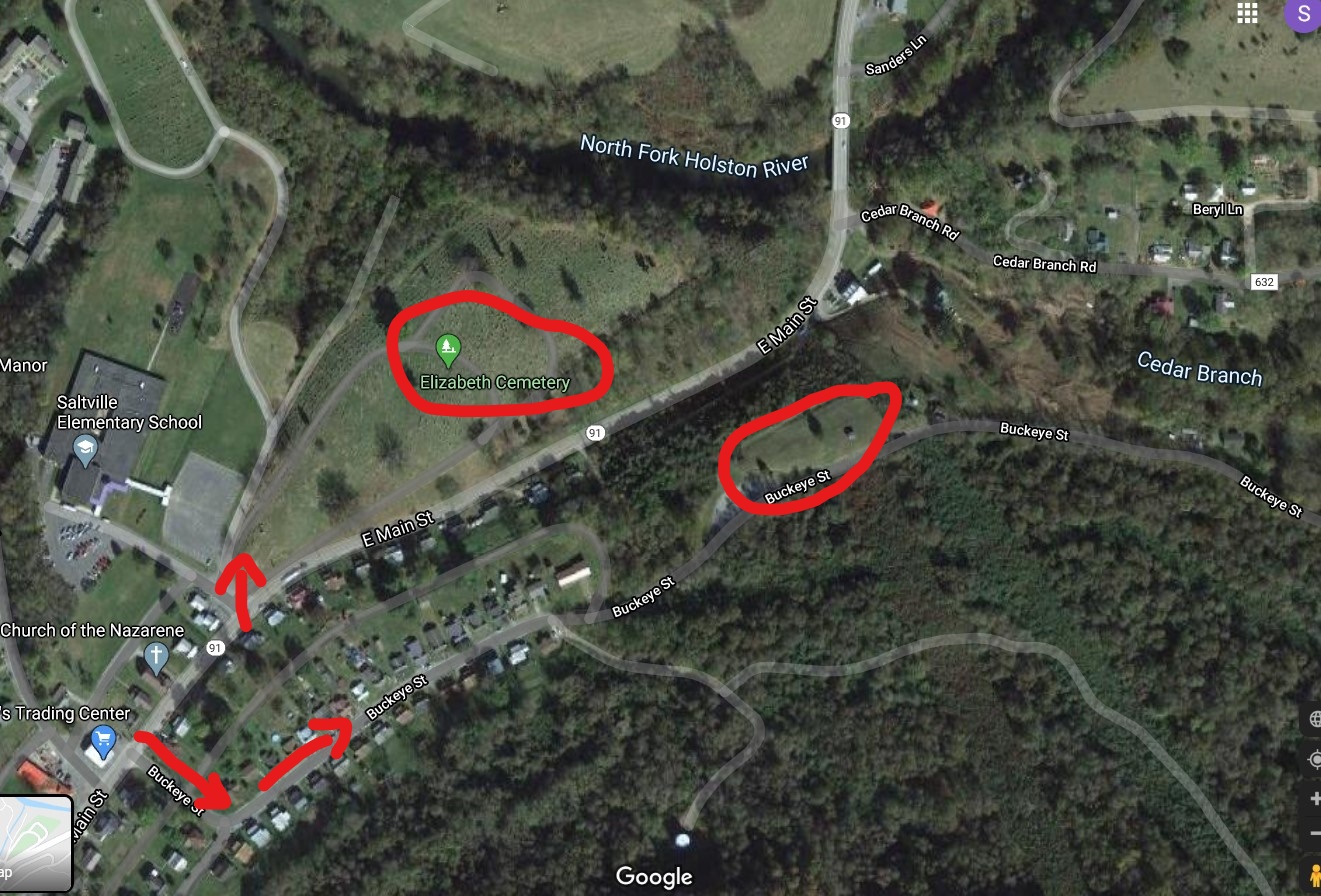ECW Weekender: Saltville, Virginia (Part 2)
Today, we’ll focus on the First Battle of Saltville and its Civil War sites. Stay tuned next Friday for the Second Battle of Saltville sites and Salt Park.
On October 2, 1864, approximately 300 Confederates held the high ground around the Salt Capital of the Confederacy. In the mineral—mined, boiled, and readied in this southwest Virginia community—was a key part of preserving foods and maintain health within the Southern states. Federal strategists and officers recognized Saltville as a supply point worthy of destruction and sent several expeditions toward the mountain village at different points during the war. (In fact, part of the New Market Campaign involved trying to get to Saltville, Leadville, and the railroad.)
Recognizing the importance of the salt marshes and industry built around them, the Confederacy created an impressive network of fortifications on the high ground around the town. Topography aided in the defense since the salt marshes and town rested in a small valley, surrounded by hills with limited access into the valley and community.
In autumn 1864, 5,000 Union troops, including the 5th and 6th USCT cavalry, led by Brigadier General Stephen G. Burbridge headed for Saltville. When they arrived on October 2, they found 2,000 Confederate Home Guard and “regular” troops waiting in a line that stretched over two miles along the high ground.
 The action is sometimes referred to as “the Battle of Cedar Branch”, taking its name from the location where Cedar Branch Creek meets the Holston River. Around noon, Federal troops charged downhill and battled for the ford. Driving the Confederates back, Federal troops crossed and battled their way into the local cemetery where close combat raged. The Confederates received reinforcements from other points on their lines, counter-attacked, and pushed the Union troops back to the fords and across the river. Around 5 p.m. the battle ended. Union casualties totaled about 290 while Confederate losses were about 160. General Burbridge retreated in the night, leaving his wounded behind.
The action is sometimes referred to as “the Battle of Cedar Branch”, taking its name from the location where Cedar Branch Creek meets the Holston River. Around noon, Federal troops charged downhill and battled for the ford. Driving the Confederates back, Federal troops crossed and battled their way into the local cemetery where close combat raged. The Confederates received reinforcements from other points on their lines, counter-attacked, and pushed the Union troops back to the fords and across the river. Around 5 p.m. the battle ended. Union casualties totaled about 290 while Confederate losses were about 160. General Burbridge retreated in the night, leaving his wounded behind.
The following day some of the Confederates commanded by Champ Ferguson and with General Felix H. Robertson’s knowledge murdered some of the Federal wounded left on the battlefield and some in the field hospital near Emory and Henry College. The incident is often referred to as the “Saltville Massacre.” Researchers are not sure how many wounded were murdered and accounts vary between a dozen to fifty victims.
Hearing the terrible reports, Generals Lee and Breckinridge discussed pressing charges against Robertson, but no formal action was taken by the Confederacy. After the war, Ferguson stood trial in Nashville, Tennessee, and was found guilty for multiple war crimes—including the Saltville killings. He was hanged on October 29, 1865 for these atrocities. General Robert E. Lee and General John C. Breckinridge discussed pressing charges during the war against Robertson.
Today, the high bluffs overlooking the river ford and the earthworks at this site can be visited. Elizabeth Cemetery, where significant fighting took place, is also a historic place to visit.
To reach these locations, ask at the museum for specific directions, follow the Civil War Trails signs, or use these directions and map:
Head east on Main Street, toward the river (away from the salt ponds). Turn right on Buckeye Street; you will be turning into a residential area with a narrow road. At the T, make a left and continue on Buckeye Street. Continue on Buckeye Street until you see the parking pull off, green space, and interpretive pavilion on the left. At the top of the bluff, you’ll overlook and see the river, Cedar Branch Creek, the cemetery, and battle area. Partway down the hill, there is a Confederate trench-line. The modern bridge across the river is at the approximate location of the 1860’s ford.

Return to your vehicle and return via Buckeye Street to Main Street. Make a right. In about a block, make a left at the entrance to Elizabeth Cemetery. Major fighting took place on this prominence.
Next week, we’ll continue to the second battlefield and the salt park…



I thought Henry Wirz from Andersonville was the only Confederate officer sentenced to death for war crimes. I remembering reading something to that affect somewhere. Or is his sentence categorized differently than Robertson?
Ferguson, not Robertson, was hung. Wirz was considered a soldier but was guilty of malfeasance or nonfeasance while he was carrying out his duties. Ferguson was not considered a soldier but an outlaw, as was Quantrill and Bloody Bill Anderson, even though they all claimed that they were soldiers. However Quantrill and Anderson died in firefights, not by hanging. Mosby used similar tactics and even summarily executed Union soldiers in retaliation for the same against his raiders, but the casualties he inflicted were never considered massacres. Robertson’s conduct was similar to Forrest’s at Fort Pillow when he was accused of looking the other way when his soldiers began slaughtering colored troops who surrendered. Neither faced charges.
Gotcha. My bad on the miss-read (Ferguson/Robertson). Thank you for clarifying 🙂
A little curious, how many Federals were charged with war crimes? There are numerous, well documented incidents of war crimes against both civilians and Confederate soldiers.
You’re not a little curious Robert, you know full well that none were. How many Confederates were charged with war crimes? A handful?
They couldn’t even get close to convicting Forrest. Lee was never arrested for treason. And Jeff Davis’ case was dismissed and he was set free, within like four years. Recently released Democrat Chicago politico Rod Blagojevich actually spent more time in prison then Jeff Davis did.
Lyle, from your comment, it is clear you know very little of American history and the founding fathers. The people of any state had the Constitutional right to leave the union should their people vote to do so. President Buchanan had stated that the Federal government did not have the Constitutional authority to wage war on any state. You mention that Davis and Lee should have been charged with treason. If you were up on your history, the reason the Federal government did not pursue treason charges because it would most certainly go before the Supreme Court where the Federal government and the northern states could have been found guilty of waging an unconstitutional war. Out of all the president’s, Lincoln trashed the Constitution and Bill of Rights like no other. So, who was the most treasonous?
Robert,
So if the Supreme Court was to rule that Abraham Lincoln and Congress waged an unconstitutional war, why didn’t they do so while the war was going on? If what you say is true, don’t you think they would have said some themselves during the war itself?
Why also did the Supreme Court rule in 1869, in Texas v. White, that the Constitution did not permit states to unilaterally secede from the United States, and that the ordinances of secession, and all the acts of the legislatures within seceding states intended to give effect to such ordinances, were “absolutely null”?
I support you believing whatever you want to Robert, but what I believe in is that it is you who needs to do some reading. 😉
The most authoritarian, intrusive, highly centralized federal administration in the Civil War, was actually Jefferson Davis’ in Richmond. Much more so than Lincoln’s. Old Abe has been lambasted by Copperheads & Lost Causers as a tyrannical despot since he took the Oath in March of ‘61. In reasoned hindsight, it’s a wonder he wasn’t a tyrant, given the circumstances. His magnanimity, his leniency makes the fevered overreaction of the fire-eating secessionists to his election all the more tragic, unfortunate, and unnecessary in hindsight. Facts are dang stubborn things.
And so is the Constitution. What good is a government that doesn’t abide by its own Constitution? Our founding fathers knew what they were doing, the Constitution and Bill of Rights are were meant to keep a check on a government that some would think would lead to tyranny.
thanks Sarah…this brings to mind an old (really old) article written for the original CWTI…believe it was called the “Saltville Massacre” …i will have to dig it up and add your geographical context — good stuff. thanks again.
we have a copy of that issue in our archives at Echos Though Time museum in springville ny . will be looking forward to the next segment .
Some of my ancestors fought Champ Ferguson’s band in & around Fentress Co, Tenn. Some were Hatfields in Capt. “Tinker Dave” Beaty’s Independent Company of Union Scouts, a Union guerrilla force that served in the Cumberland Plateau. Another ancestor Anderson Jones was a pvt in Co D, 1st Tenn Mounted Infantry (Union). Jones’ company Captain was Rufus Dowdy. Both Beaty & Dowdy would testify against Champ Ferguson at his trial in Nashville. Most of my family left Fentress Co in 1865 for Wright Co, Mo. Probably the move was due to messy tensions over the War.
Nice photos Sarah Kay! Look forward to the next part.
To Robert Rainey’s question, “How many Federals were charged with war crimes,” at least five may serve as a preliminary answer. In her N.Y. Times Opinionator column, “Rape and Justice in the Civil War” (April 25, 2013), Yale Professor Crystal Feimster named them and identified their units. The five were all convicted. One was sentenced to death, three others (including two officers) to ten years each of hard labor.